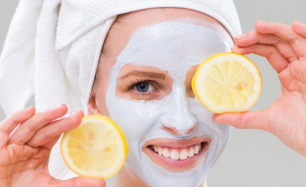How to Choose the Right Moisturizer for Your Skin Type
Moisturizing is one of the most essential steps in any skincare routine. It helps maintain hydration, supports the skin barrier, and keeps your complexion smooth and balanced. But with so many options out there—creams, gels, lotions, balms—choosing the right moisturizer for your skin type can feel overwhelming.
The truth is, not all moisturizers are created equal. Picking one that aligns with your skin’s unique needs can make a world of difference in how your skin looks and feels. Here’s a guide to help you find your perfect match.

Why Moisturizer Matters
Moisturizers do more than just add water to the skin. They perform three main functions:
- Humectants (like hyaluronic acid and glycerin) draw moisture into the skin.
- Emollients (like squalane and plant oils) smooth and soften the skin.
- Occlusives (like shea butter and petrolatum) form a barrier to lock in moisture.
The ideal moisturizer for you will balance these functions based on your skin type.
Step 1: Know Your Skin Type
Before picking a product, it’s important to know your skin’s behavior:
- Dry skin feels tight, flaky, or rough.
- Oily skin is shiny and prone to breakouts, especially in the T-zone.
- Combination skin is oily in some areas (usually forehead, nose, chin) and dry in others (typically cheeks).
- Sensitive skin is easily irritated, prone to redness or stinging.
- Normal skin feels balanced—not too oily or too dry.
Step 2: Choose the Right Texture and Formula
Here’s what to look for based on your skin type:
Dry Skin: Rich and Creamy
Look for thick creams or balms with ingredients like:
- Hyaluronic acid
- Ceramides
- Shea butter
- Squalane
- Glycerin
These ingredients deeply hydrate, strengthen the skin barrier, and relieve flakiness. Use morning and night, especially in colder months.
📝 Pro Tip: Apply on damp skin to lock in moisture more effectively.

Oily or Acne-Prone Skin: Lightweight and Oil-Free
Go for gel-based or oil-free moisturizers with:
- Niacinamide (to control oil)
- Salicylic acid (to prevent breakouts)
- Hyaluronic acid (for hydration without heaviness)
- Non-comedogenic labels (won’t clog pores)
Avoid heavy creams that may sit on the surface and trigger breakouts.
📝 Pro Tip: Moisturizing oily skin is essential—skipping it can actually make your skin produce more oil to compensate.
Combination Skin: Balancing and Lightweight
Choose a lightweight lotion or gel-cream that offers hydration without greasiness. Ingredients to look for:
- Hyaluronic acid
- Aloe vera
- Green tea extract
You can even use two different moisturizers—one for dry areas and another for oily zones—if needed.
📝 Pro Tip: Focus richer formulas on dry zones like cheeks, and keep your T-zone light and breathable.
Sensitive Skin: Calming and Fragrance-Free
Opt for gentle, fragrance-free formulas with soothing ingredients like:
- Colloidal oatmeal
- Aloe vera
- Chamomile
- Centella asiatica (Cica)
- Ceramides
Avoid alcohols, essential oils, and harsh preservatives, which can irritate sensitive skin.
📝 Pro Tip: Patch test new products before full application.
Normal Skin: Balanced and Nourishing
Lucky you! You have the most flexibility. Look for lightweight creams or lotions with:
- Peptides
- Antioxidants (like Vitamin E or C)
- Hyaluronic acid
- Plant-based oils (like jojoba or avocado)
You can change formulas with the seasons—lighter in summer, richer in winter.
📝 Pro Tip: Even normal skin needs consistent hydration to maintain its balance.
Other Factors to Consider
Age: As skin matures, it tends to get drier. Look for moisturizers with anti-aging ingredients like peptides, ceramides, and retinol.
SPF: For daytime use, consider a moisturizer with built-in SPF for added sun protection.
Climate: In dry or cold climates, go for richer formulas. In humid weather, opt for lightweight or gel-based moisturizers.

Final Thoughts
Choosing the right moisturizer doesn’t have to be complicated—it’s about understanding your skin and selecting products that support its natural needs. A well-suited moisturizer will not only make your skin feel more comfortable but also help improve its tone, texture, and resilience over time.
Start with your skin type, look at the ingredients list, and let your skin guide you from there. Hydrated, happy skin is just a few mindful choices away.





